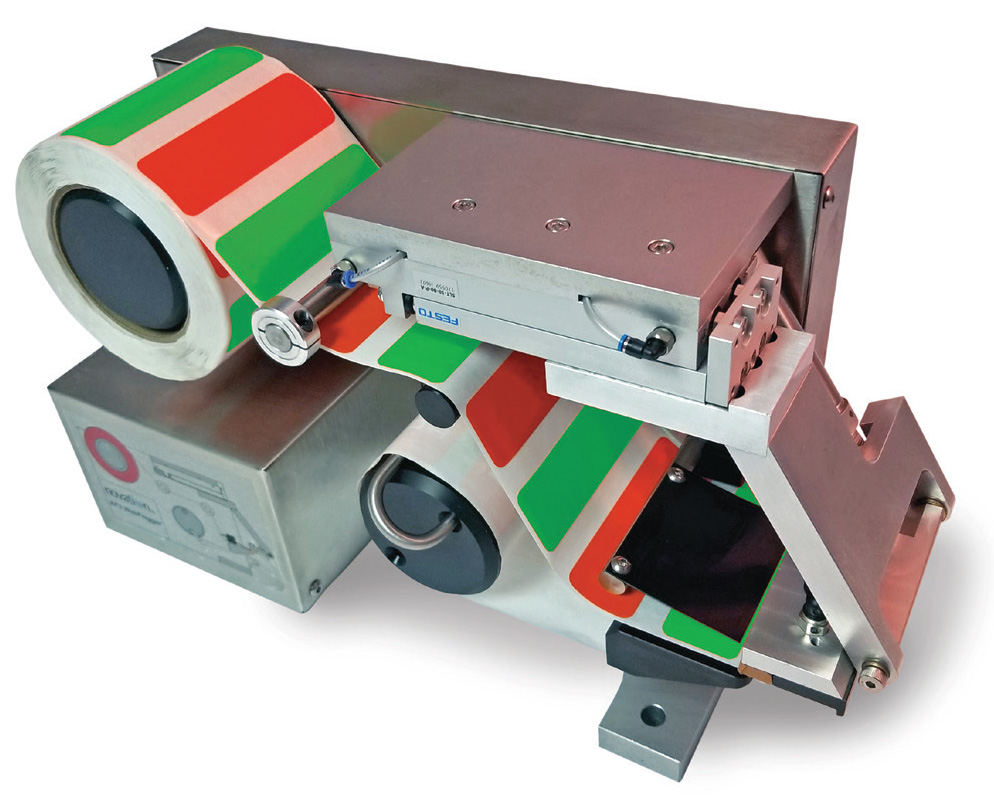HOW TO: Prevent Defects From Reaching Your Customers
 Although everyone strives for zero scrap on the jobs they run, there are a myriad of reasons that coating, extrusion, printing, processes etc. can’t of produce 100% saleable product. Whether it’s a mosquito stuck to an extruded web, a splice, or a streak in the printing, some defects are just unavoidable.
Although everyone strives for zero scrap on the jobs they run, there are a myriad of reasons that coating, extrusion, printing, processes etc. can’t of produce 100% saleable product. Whether it’s a mosquito stuck to an extruded web, a splice, or a streak in the printing, some defects are just unavoidable.
As a result almost all companies have to accept that there will be some flaws in their processes. However none of their customers expect any of those flaws to be passed along to them. So locating and accurately marking those sections of web are critical to a process. Material determined to be out of spec must be easily identified later so it can be culled out before it gets out the door.
Everyone has some method of determining when a section of a job run must later be removed. And most attempt to mark the web somehow to locate those sections later. Some insert slips of paper into the winding roll, some manually apply a pressure sensitive label to the moving web, some use marking pens to mark the bad areas of web as it passes by etc. Not only are these methods dangerous, but as manual operations they are rarely accurate.
100% web inspection systems to verify quality are increasingly popular. However automatic inspection is only one component. These systems which perform print and surface inspection or gauge coatweight for example, typically all have the ability to output a signal coincidental to location of the flaw sensed. This provides the ability to close the inspection loop and automatically and very accurately mark the location. These signals, along with machine signals correlating to other areas needing marking, can automatically trigger Novation’s WebFlaggers. An example of this would be taking a signal from an automatic unwind splice which would then be tracked so a flag will wait to be applied until the splice reaches the location of the WebFlagger.

How the Novation AF3 WebFlagger Works
The AF3 WebFlagger takes operator contact with the web out of the defect-marking process. With the press of a button, or via machine signal, the AF3 applies a pressure-sensitive flag at the defective location. At speeds up to and even over 4,000 fpm (1,200 mpm), the AF3 instantly and accurately marks the web. Novation’s flags are optimized for the job. A film lamination protects against torn flags, and the adhesive is “deadened” on the portion of the flag that extends off the web’s edge to prevent the flag from folding back onto itself, or sticking to idler rolls and other machine parts.
Novation offers a variety of flag types. Some customers are certain that some sections are unusable, and therefore use flags with a very aggressive permanent adhesive which can’t be removed from most substrates. Others mark questionable sections which must be re-inspected downstream with removable adhesive flags, allowing them to be cleanly removed if the product is later determined to be acceptable. And with the MultiColor option, the AF3 WebFlagger can even apply different color flags to identify different issues.
610-837-5026











